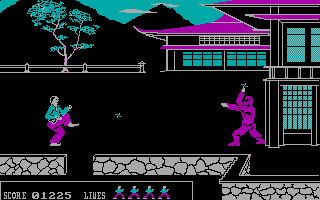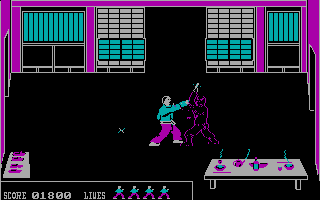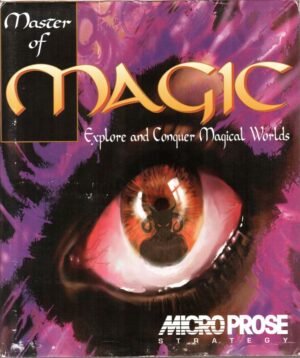Retro Replay Review
Gameplay
From the moment you step into Bushido: the Way of the Warrior, you’re thrust into a bare-knuckle brawl across three distinct locations: the open courtyard, the dimly lit dojo and the cramped cellar. Each area teems with Samurai foes wielding katanas and shurikens, alongside environmental hazards like snakes, birds or even a giant spider. Your mission is simple yet relentless: infiltrate, secure hidden treasures and escape before your enemies overwhelm you.
(HEY YOU!! We hope you enjoy! We try not to run ads. So basically, this is a very expensive hobby running this site. Please consider joining us for updates, forums, and more. Network w/ us to make some cash or friends while retro gaming, and you can win some free retro games for posting. Okay, carry on 👍)
The control scheme is surprisingly deep for its era. Three modes—movement, punch and kick—mapped to nine numpad keys give you a surprising repertoire of backflips, rolls, crouches, spinning punches and flying kicks. Mastering these inputs feels akin to learning real martial-arts forms. Switching between modes on the fly rewards precision and timing, making every encounter a small choreography of strikes and evasion.
Adding to the replay value are ten difficulty settings, from an all-about-practice mode to punishing levels that demand pixel-perfect maneuvers. Beginners can drill their combo knowledge without interruption, while seasoned players will relish the rising intensity. The learning curve remains steep but fair, encouraging you to refine your technique on each run.
Graphics
Visually, Bushido embraces a classic 8-bit aesthetic that captures the stark beauty of feudal Japan. Earthy tones dominate the backgrounds—tiled courtyards, wooden dojo interiors and dank, shadowy cellars—each rendered in crisp pixel art. Though simplicity rules, the strong silhouette work on enemies and architecture creates an evocative atmosphere.
Character sprites are well defined, with smooth animations for each signature move. Your warrior’s flying kick has a satisfying arc, and the Samurai guards flinch convincingly when struck. Environmental creatures—snakes slithering across the floor, birds swooping overhead, a massive spider blocking narrow corridors—are small details that breathe life into each stage.
While there’s no parallax scrolling or dynamic lighting, the minimalist presentation works to the game’s advantage. The stark contrast between foreground and background keeps the focus on combat, and the restrained color palette evokes an authentic dojo feel. Occasional weather or torchlight effects add subtle variety without overtaxing the hardware.
Story
Storytelling in Bushido is minimalist by design, reflecting its arcade roots. You are a lone warrior on a covert mission to infiltrate a fortified complex and retrieve precious treasures. There’s no cutscene exposition—just you, a hidden path through enemy lines, and a series of escalating challenges.
Each level suggests its own narrative beat: the courtyard introduces you to the enemy’s outer defenses, the dojo reveals the fighting master’s inner sanctum and the cellar hints at darker secrets hidden beneath the estate. Collecting treasure items isn’t just a scoring mechanic; it reinforces the sense of accomplishment as you delve deeper into hostile territory.
Though there’s little dialogue or character development, the game’s pacing and environmental storytelling fill in the gaps. The sparse narrative allows you to project your own samurai ethos onto the action, making every victory feel personal and every defeat a lesson in humility.
Overall Experience
Bushido: the Way of the Warrior stands as a compelling early example of Eastern martial-arts in gaming. Its tight controls and varied move set deliver a satisfying combat system that predates many modern fighters. Learning the numpad-based inputs can be daunting at first, but once you internalize the patterns, each bout feels like executing a well-choreographed kata.
The game’s visual restraint and minimalist story might strike some as retro simplicity, but they also lend it a timeless quality. Every level is designed to challenge your mastery of timing and positioning, and the ten difficulty settings ensure you’ll return again and again to hone your skills. Practice mode is an especially welcome feature for newcomers.
For fans of classic arcade action and martial-arts aficionados, Bushido offers a no-frills, high-discipline experience. It rewards patience, precision and a willingness to learn from defeat. While it lacks the narrative depth or flashy effects of modern fighters, its foundational gameplay and authentic Japanese ambiance make it a rewarding pick for any retro collector or combat enthusiast.
 Retro Replay Retro Replay gaming reviews, news, emulation, geek stuff and more!
Retro Replay Retro Replay gaming reviews, news, emulation, geek stuff and more!









Reviews
There are no reviews yet.